Arts in the Philippines refer to the various forms of the arts that have developed and accumulated in the Philippines from the beginning of civilization in the country up to the present era. They mirror the scope of imaginative impacts on the nation’s way of life, including indigenous types of expressions of the human experience, and how these impacts have sharpened the nation’s crafts.
Folk painting has always been part of various cultures in the Philippines. Petroglyphs and petrographs are the earliest known folk drawings and paintings in the country, with the oldest made during the Neolithic age. Human figures, frogs, lizards, along with other designs have been depicted. They may have been mostly symbolic representations and are associated with healing and sympathetic magic. The influences brought by other Asian and Western cultures artistically advanced the art of paintings. In the 16th century and throughout the colonization era, paintings of religious propaganda for the spread of Catholicism became rampant. Majority of these paintings are essentially part of church structures, such as ceilings and walls. At the same time, non-religious paintings were also known. Notable painting during the time include the image of Nuestra Senora de la Soledad de Porta Vaga (1692) and paintings at Camarin de da Virgen (1720). In the 19th century, wealthier, educated Filipinos introduced more secular Filipino art, causing art in the Philippines to deviate from religious motifs. The use of watercolour paintings increased and the subject matter of paintings began to include landscapes, Filipino inhabitants, Philippine fashion, and government officials. Portrait paintings featured the painters themselves, Filipino jewelry, and native furniture. Landscape paintings portrayed scenes of average Filipinos partaking in their daily tasks. These paintings often showcased ornately painted artists’ names. These paintings were done on canvas, wood, and a variety of metals. Notable watercolor paintings were done in the Tipos del País style or the Letras y figuras style. Notable oil paintings of the 19th century include Basi Revolt paintings (1807), Sacred Art of the Parish Church of Santiago Apostol (1852), Spoliarium (1884), La Bulaqueña (1895), and The Parisian Life (1892). In the American occupation, a notable Filipino painting was The Progress of Medicine in the Philippines (1953). After World War II, painting were heavily influenced by the effects of war. Common themes included battle scenes, destruction, and the suffering of the Filipino people. Nationalistic themes in painting continued amidst the war’s effects. Prime examples include International Rice Research Institute (1962) and the Manila Mural (1968) Paintings of the 20th-21st century have showcased the native cultures of the Philippines, as part of the spread of nationalism. Notable paintings during the era include Chickens (1968) and Sarimanok series (late 20th century). Some works have also criticized the lingering colonial viewpoints in the country, such as discrimination against darker-skinned people and the negative effects of colonialism. Notable artistic pieces of this topic are Filipina: A racial identity crisis (1990’s), and The Brown Man’s Burden (2003). Numerous works of art have been made specifically as protest art against state authoritarian rule, human rights violations, and fascism.
Here are some of the famous and notable Filipino artist of all time:
Fernando Amorsolo
The Philippine artist Fernando Amorsolo (1892-1972) was a portraitist and painter of rural landscapes. He is best known for his craftsmanship and mastery in the use of light.
During the 1920s and 1930s Amorsolo’s output of paintings was prodigious. In 1939 his oil Afternoon Meal of the Workers won first prize at the New York World’s Fair. During World War II Amorsolo continued to paint. The Philippine collector Don Alfonso Ongpin commissioned him to execute a portrait in absentia of Gen. Douglas MacArthur, which he did at great personal risk. He also painted Japanese occupation soldiers and self-portraits. His wartime paintings were exhibited at the Malacanang presidential palace in 1948. After the war Amorsolo served as director of the college of fine arts of the University of the Philippines, retiring in 1950. Married twice, he had 13 children, five of whom became painters.
Amorsolo was noted for his portraits. He made oils of all the Philippine presidents, including the revolutionary leader Gen. Emilio Aguinaldo, and other noted Philippine figures. He also painted many wartime scenes, including Bataan, Corner of Hell, and One Casualty.
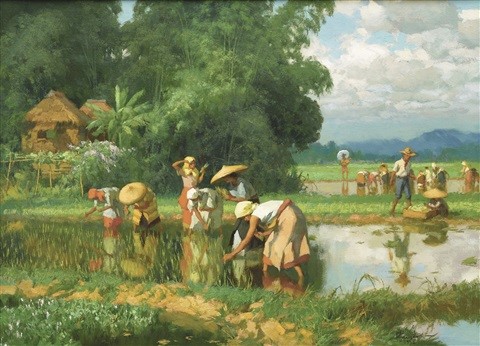
Planting Rice
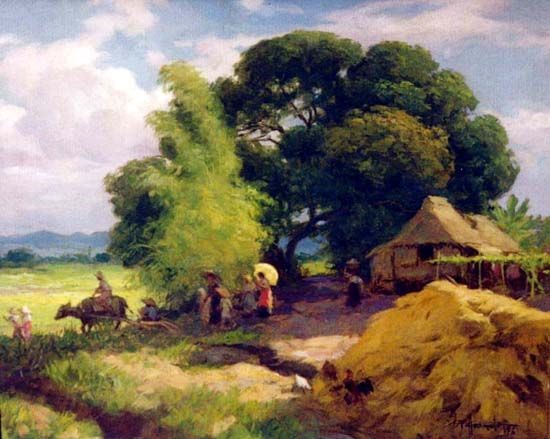
Sunday Morning, Going to Town
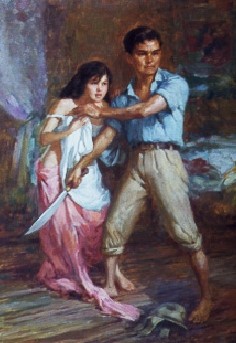
Defence of a Filipina Woman’s Honour
Juan Luna
Juan Luna de San Pedro y Novicio Ancheta, better known as Juan Luna, was a Filipino painter, sculptor and a political activist of the Philippine Revolution during the late 19th century. He became one of the first recognized Philippine artists.
His artistic talents were established in 1878 with the opening of the first art exposition in Madrid, which was called the Exposicion Nacional de Bellas Artes (National Demonstration of Beautiful Arts).
From then on, Luna became engrossed in painting and produced a collection of paintings that he exhibited in the 1881 Exposition.
The famous masterpieces of Luna include:
“Spoliarium“, a painting he entered in the Exposicion General de Bellas Artes in 1884 in Madrid, where it won a gold medal. It currently hangs in the main gallery at the ground floor of the National Museum of the Philippines.
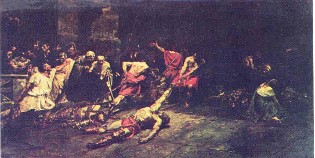
La Batalla de Lepanto (The Battle of Lepanto), commissioned by the Spanish Senate after he developed a friendship with the King of Spain.
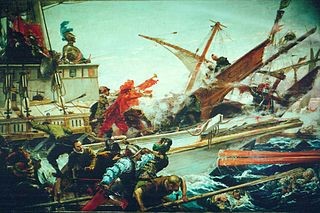
El Pacto de Sangre (The Blood Compact) , which depicted the blood compact ceremony between the native chieftain Datu Sikatuna and the Spanish conquistador Miguel Lopez de Legazpi, now displayed in Malacanang.
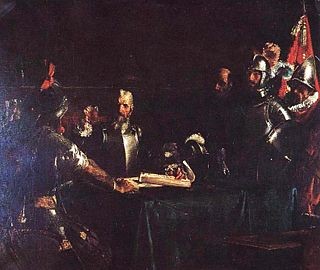
Benedicto Cabrera
Benedicto Reyes Cabrera — or BenCab, as he is more popularly known is widely hailed as a master of contemporary Philippine art. He was born in Manila on April 10, 1942. BenCab began carving a niche for himself in Manila’s art circles shortly after receiving his bachelor’s degree in Fine Arts from the University of the Philippines in 1963.
A painter and printmaker, he has exhibited widely in the Philippines and in Asia, Europe, and the United States. He has won several major art awards in a career spanning four decades. In 1992, he received the Gawad CCP Para sa Sining (Cultural Center of the Philippines Award for the Arts).
In 2006, he was conferred the Order of National Artist for Visual Arts by President Gloria Macapagal-Arroyo in Malacanan Palace.
His works have been the subject of three books, Ben Cabrera: Etchings (1970-1980) by Cid Reyes; Bencab’s Rock Sessions by Eric Caruncho; and BENCAB by Alfred Yuson and Cid Reyes.
Some of his works includes:
Sabel in blue. A major subject that recurs through BenCab’s works through the decades, inspired by a real-life scavenger, he photographed and sketched in 1965, the Sabel image has become the artists vehicle for the transmission of intensely emotional moods.
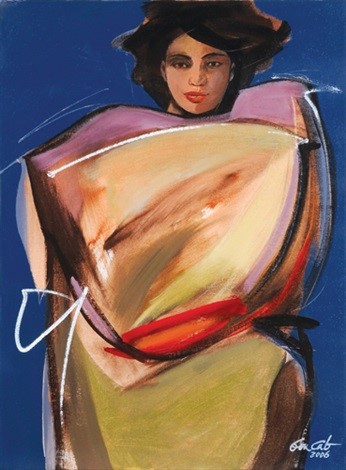
Yellow Confetti (Lot 2133). A dynamic and powerfully resonant work which describes the civil resistance in the Philipines during the early to mid-1980s. This period became known as “People Power” or “EDSA”; but was also called the Yellow Revolution due to the use of yellow flags and ribbons by the resisters.
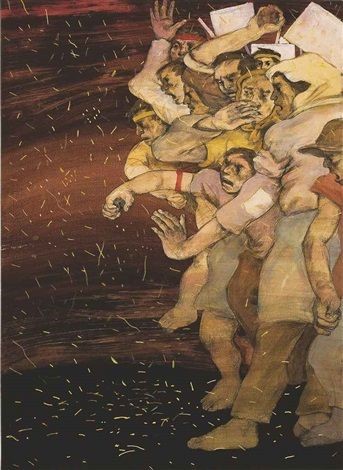
Ang Kiukok
Ang Kiukok was a Filipino painter who attained prominence for his distinct portrayal of cubist, surrealist and expressionist concepts.
His cubist style was influenced by his master, National Artist Vicente Manansala. Critics remark that the style of Ang Kiukok represents his negative view of reality – full of suffering, poverty, cruelty, and violence. He was named a National Artist for Visual Arts in 2001 for his figurative expressionist style. Ang Kiukok was known for his non-mainstream portrayals of the mother and child and the crucifixion of Christ. Kiukok has been called “one of the most dynamic figures in contemporary Philippine arts.” It has also been said that he “opened eyes with his violent Cubist paintings of fighting cocks, stray dogs and tormented lovers,” and that his Expresionist works “sustained a hard-edged evocation of fortitude and indignation in a hostile setting of screaming men, crucifixions and junk.”
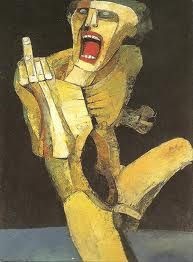 Angry Figure
Angry Figure
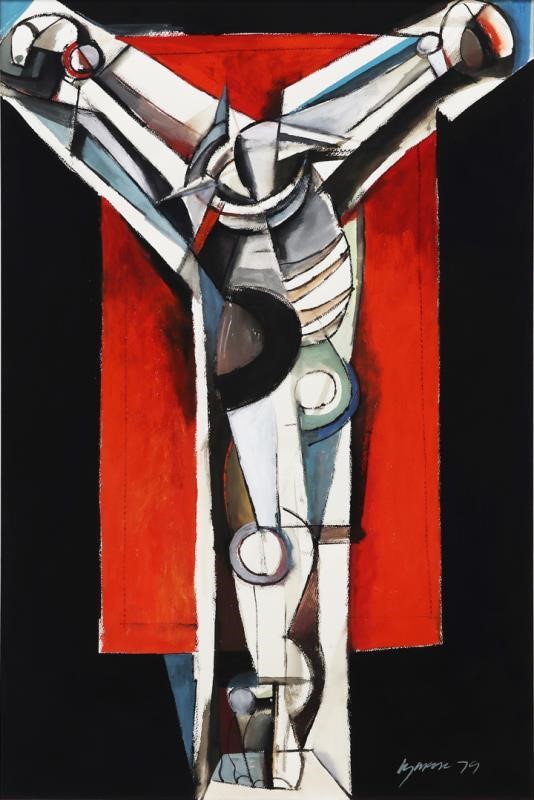 Crucifixion
Crucifixion
Félix Resurrección Hidalgo
On February 21, 1853, Felix Resurreccion Hidalgo, one of the greatest Filipino painters along with fellow painter Juan Luna in the 19th century, was born in Binondo, Manila. Hidalgo played a significant role in Philippine history for having been an acquaintance and inspiration for members of the Philippine reform movement which included Dr. Jose Rizal, Marcelo del Pilar, Mariano Ponce and Graciano López Jaena.
He studied Fine Arts and was subsequently sent to Spain in 1879 as a “pensionado” and enrolled in the School of Fine Arts in Madrid. Instead of returning to the country after his studies, Hidalgo went to Paris and put up a gallery, which became one of the centers of Filipino activities, where Filipino exiles and revolutionaries found a sanctuary.
One of the highlights of his career was his winning the silver medal in the 1884 Madrid Exposition of Fine Arts, along with the gold win of painter Juan Luna, whom members of the Philippine reform movement celebrated, with Rizal toasting to the two painters’ good health and citing their awards as evidence that Filipinos and Spaniards were equals. In his lifetime, Hidalgo produced over a thousand works which include oil paintings, water color, pastels and charcoal drawings, with subjects ranging from the mythological and historical to landscapes, seascapes, portraits and figures of the genre.
Eventually he became a great prize winner, including his paintings exhibited at the French Academy and marked H.C. (Hors Concours). He received a gold medal for his overall participation at the Universal Exposition in St. Louis, Missouri in 1904. His “El Violinista” was individually accorded a gold medal
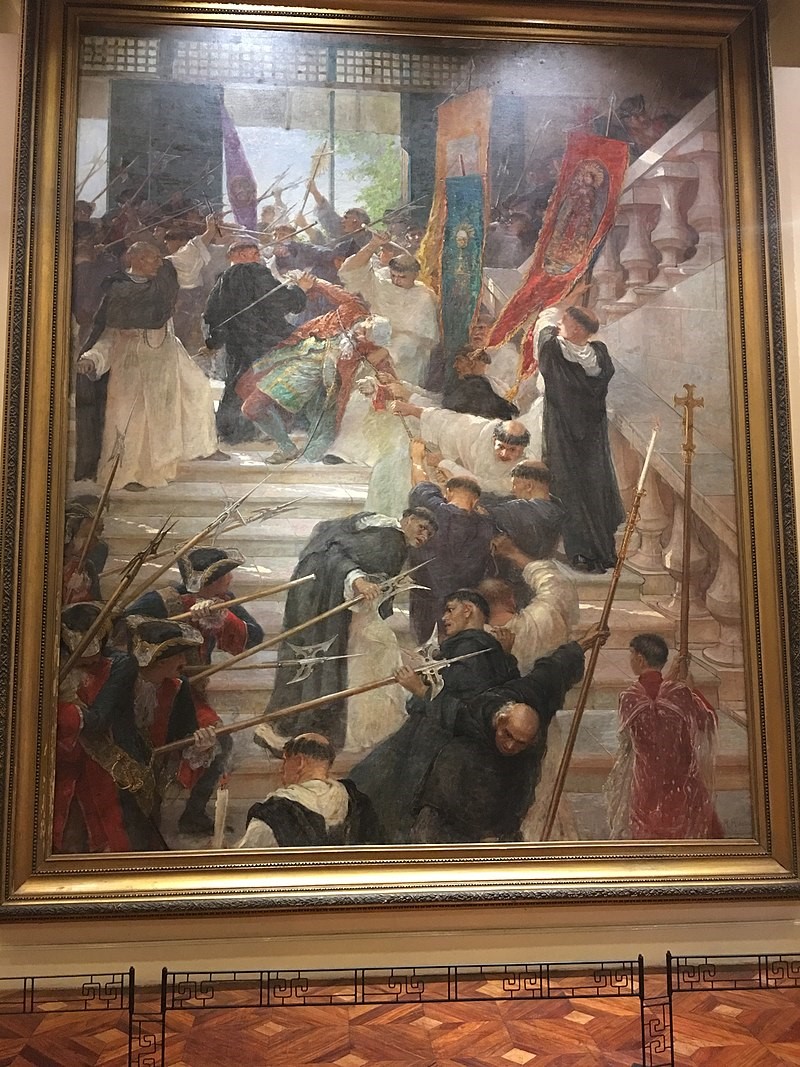 The murder of Governor-general Fernando Manuel de Bustillo Bustamente y Rueda
The murder of Governor-general Fernando Manuel de Bustillo Bustamente y Rueda
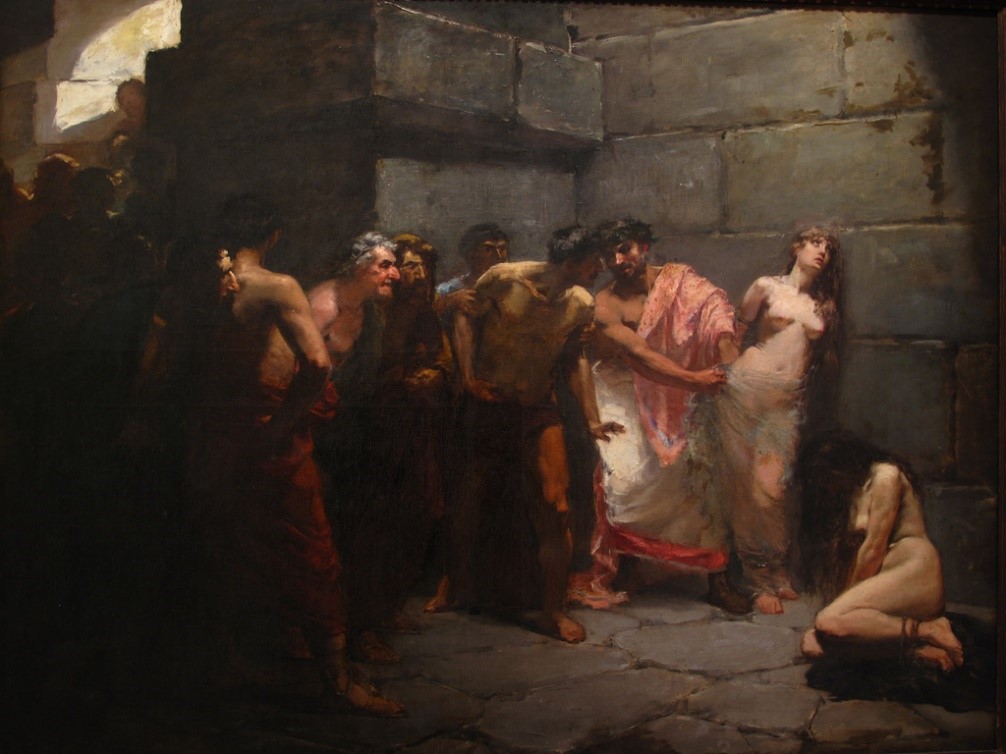 Las vírgenes Cristianas expuestas al populacho
Las vírgenes Cristianas expuestas al populacho
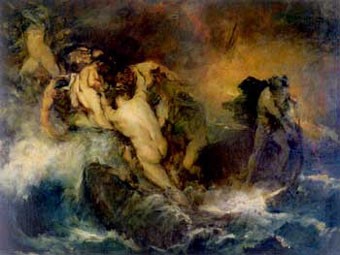 La Barca de Aqueronte,
La Barca de Aqueronte,
Ronald Ventura
Born in 1973 in Manila, the Philippines, where he continues to live and work, Ronald Ventura ranks as one of the most acclaimed artists of his generation in Southeast Asia. With their unique combinations of figurative motifs, his paintings and sculptures are now among the most recognizable images of contemporary art in Southeast Asia. His work features a complex layering of images and styles, ranging from hyperrealism to cartoons and graffiti. Ventura takes the layering process in his work as a metaphor for the multifaceted national identity of the Philippines. Over the centuries, the profound influences of various occupying powers – Spain, Japan, and the United States – along with the underlying indigenous culture, have produced a complex and at times uneasy sense of identity. Ventura explores this historical and psychic phenomenon through a dialogue of images evoking East and West, high and low, old and young – seen, for example, in allusions to Old Master paintings or Japanese and American cartoons. He draws our attention to the “second skin” of cultural signifiers that each person carries with him, however unwittingly. Ventura views skin as an expressive surface – written on with tattoos, concealed under layers of imagery, or exploding outwards to reveal an inner world of fantasy and conflict.
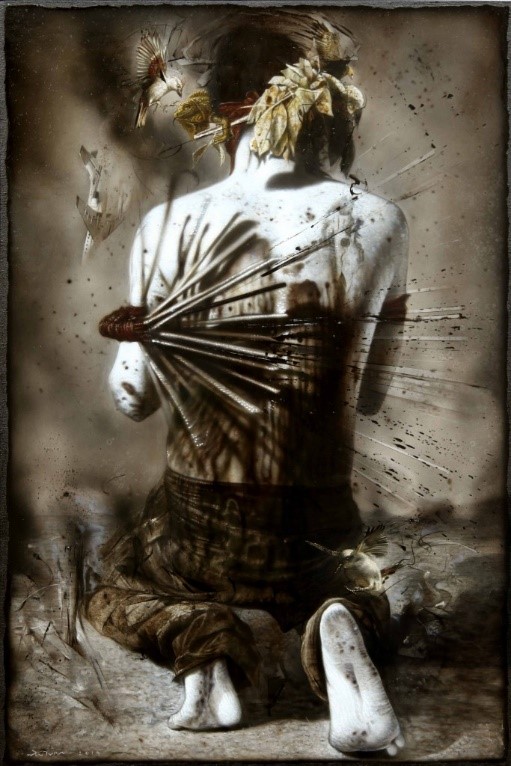 Turn Around B
Turn Around B
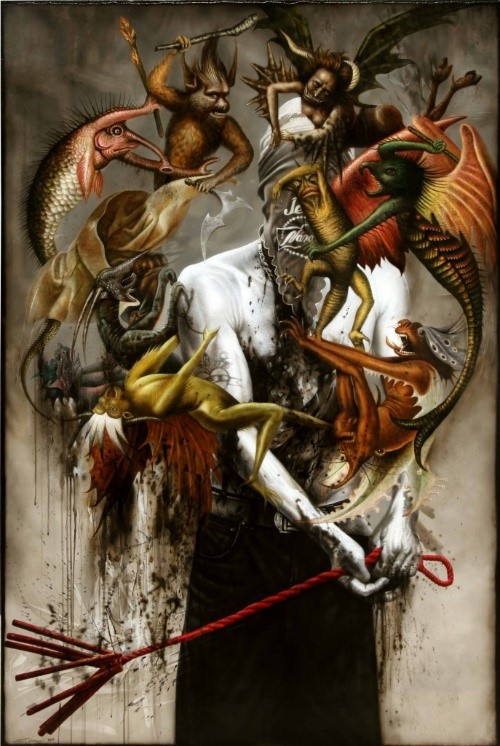 Visiting Artist’s Demons
Visiting Artist’s Demons
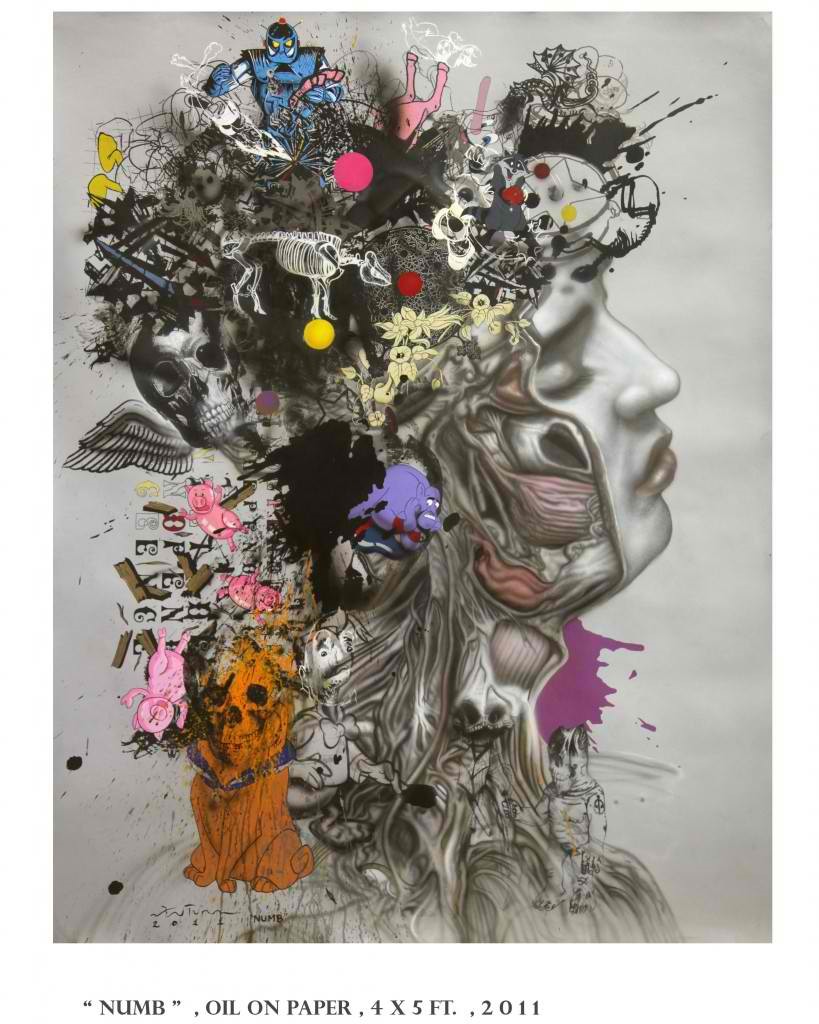 Numb
Numb
Art can show us our environmental factors and how every one of us fits in the plan of things. It permits us to envision, make and mirror our thoughts in a visual portrayal of our reality. By communicating the social lavishness of the archipelago in the entirety of its decent variety, Filipino artists have assisted with molding a feeling of national character. Numerous Malay social conventions have made due in spite of hundreds of years of unfamiliar standard.
I think the great things about all these artists are not just their skills and ability to paint but also the meaning behind their masterpiece. What’s so amazing is that these arts have been a part of the artists heart and soul, I think that is why these paintings are beautiful. I love how they paint beautiful sceneries historical events and their ability to express the imagination (things, places, ideas that are unreal or unknowable) in nongrammatical ways. Unlike words, which come in sequences, each of which has a definite meaning, art provides a range of forms, symbols and ideas with meanings that can be determined by the artist.
https://en.wikipedia.org/wiki/Arts_in_the_Philippines#Painting
https://biography.yourdictionary.com/fernando-amorsolo
https://www.pinterest.ph/pin/518688082064709908/
https://en.wikipedia.org/wiki/The_Battle_of_Lepanto_(Luna_painting)
https://guhitartcom.wordpress.com/2018/03/13/sabel-in-blue/
https://www.pinterest.ph/pin/157203843227902771/
https://en.wikipedia.org/wiki/F%C3%A9lix_Resurrecci%C3%B3n_Hidalgo